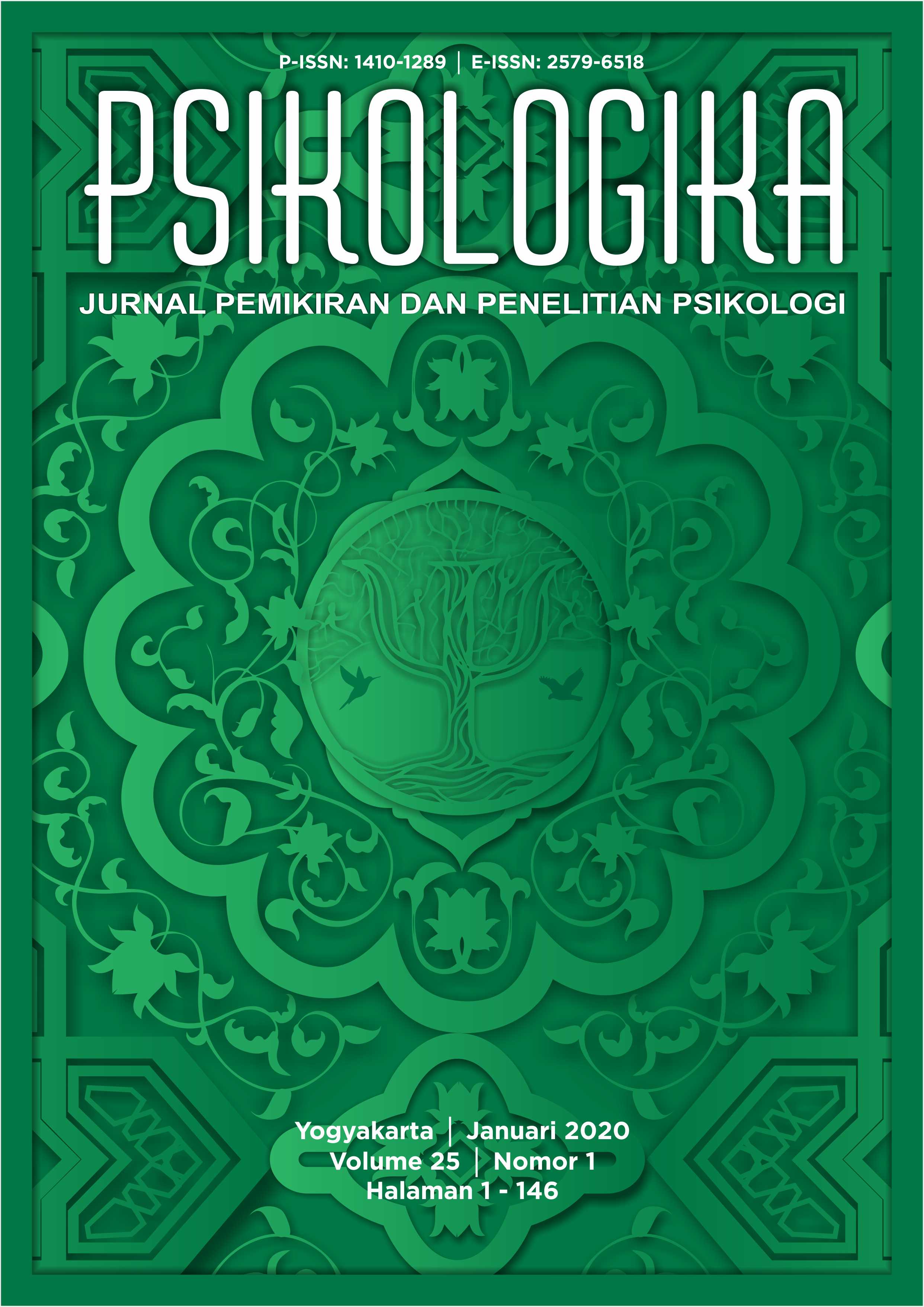Main Article Content
Abstract
Perilaku mengemudi agresif masih menjadi penyebab utama dari peristiwa kecelakaan lalu lintas. Penelitian ini bertujuan untuk mengetahui peran sikap dan kontrol perilaku yang dirasakan terhadap perilaku mengemudi agresif, dan kesediaan untuk mengemudi agresif. Penelitian ini melibatkan 96 responden mahasiswa berjenis kelamin laki-laki maupun perempuan yang menggunakan kendaraan bermotor untuk aktivitas sehari-hari. Pengumpulan data menggunakan Aggressive Driving Behavior Scale (ADBS) (alfa = .846) dari Houston et al. (2003), skala Sikap terhadap Mengemudi Agresif (alfa = .814), skala Kontrol Perilaku yang dirasakan (alfa = .858) yang disusun peneliti dengan mengacu pada Theory of Planned Behavior (Ajzen & Fishbein, 2005), serta skala Kesediaan Mengemudi Agresif (alfa = .846). Hasil uji fit menunjukkan bahwa sikap dan kontrol perilaku yang dirasakan terhadap perilaku mengemudi agresif dimediasi oleh kesediaan untuk mengemudi agresif yang diperlihatkan dari kai kuadrat = .399 (p > .05), nilai RMSEA = .000 (</= .08), nilai GFI = .998 (> .90), dan nilai AGFI = .977 (> .90). Walaupun sikap secara signifikan memengaruhi perilaku mengemudi agresif, namun perannya menjadi lebih kuat apabila ada variabel kesediaan individu untuk mengemudi agresif.
Kata Kunci: kesediaan, kontrol perilaku yang dirasakan, perilaku mengemudi agresif, sikap
The Attitude and Behavioral Control: Willingness as a Mediator of Attitudes and Opportunities on Aggressive Driving
Abstract. Aggressive driving behavior is still a major cause of catastrophic accident events. This study aims to determine the role of attitudes and perceived behavioral control towards aggressive driving behavior, and willingness to drive aggressively. The study involved 96 respondents who drived motorized vehicle for daily activities. Data collection used Aggressive Driving Behavior Scale (ADBS) (alpha = .846) from Houston et al. (2003), Attitude toward Aggressive Driving scale (alpha = .814), Perceived Behavioral Control scale (alpha = .858) compiled by researchers with reference to the Theory of Planned Behavior (Ajzen & Fishbein, 2005), and Willingness to Drive Aggressively scale (alpha = .846). The fit test results showed that the attitude and control of perceived behavior towards aggressive driving behavior was mediated by the willingness to drive aggressively as shown from chi-square = .399 (p > .05), RMSEA value = .000 (</= .08), GFI value = .998 (> .90), and AGFI value = .977 (> .90). Although the attitude significantly influences aggressive driving behavior, its role, however, becomes stronger when there was a variable in the willingness of individuals to drive aggressively.
Keywords: aggressive driving behavior, attitude, perceived behavioral control, willingness
Article History:
Received 7 February 2020
Revised 31 May 2020
Accepted 31 May 2020
Article Details
Authors who publish with this journal agree to the following terms:
- Authors retain copyright and grant the journal right of first publication with the work simultaneously licensed under a Creative Commons Attribution-ShareAlike 4.0 International License that allows others to share the work with an acknowledgment of the work's authorship and initial publication in this journal.
- Authors are able to enter into separate, additional contractual arrangements for the non-exclusive distribution of the journal's published version of the work (e.g., post it to an institutional repository or publish it in a book), with an acknowledgment of its initial publication in this journal.
- Authors are permitted and encouraged to post their work online (e.g., in institutional repositories or on their website) prior to and during the submission process, as it can lead to productive exchanges, as well as earlier and greater citation of published work (See The Effect of Open Access).




